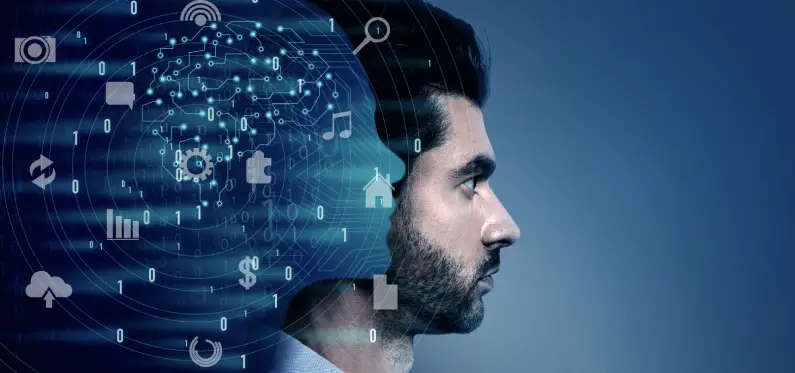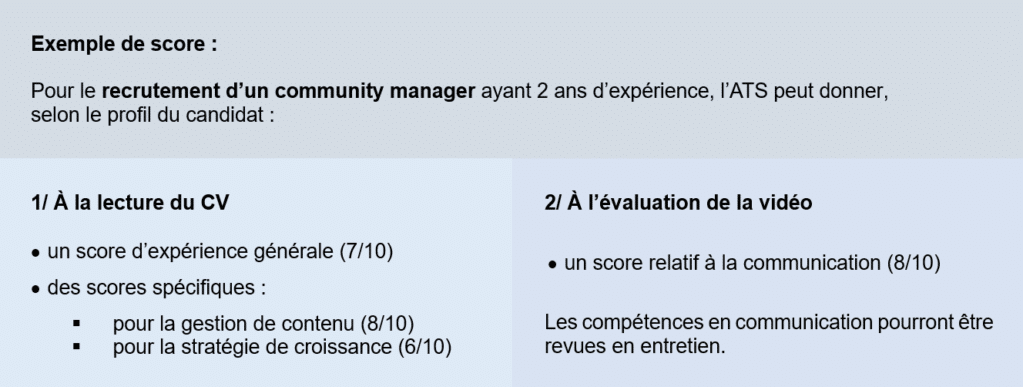Will artificial intelligence (AI) live up to all its promises when it comes to HR expectations? Optimise processes to save time and increase efficiency. Reduce bias and the risks of discrimination. Predictive skills management. There are so many practical applications to try out. Here's an update from Erwan Barbier, a trainer specialising in artificial intelligence and recruitment.

The human resources function is rich!
Managing industrial relations, training, payroll, recruitment, the employer brand, preventing psychosocial risks, personnel administration... these are just some of the issues that HR professionals deal with on a daily basis. Not to mention the fact that, for the most part, they also have legal and accounting obligations...
All of this is available in a wide range of formats, with multiple contacts and a variety of data sources. In other words, there is enormous potential for optimisation. That's why, likeother company departmentsThe HR function benefits from incorporating artificial intelligence into its day-to-day work.
What's more, theusing ChatGPT has become widespread: CV analysis, generation of LinkedIn posts for employer branding or even preparation of job offer templates. According to Precedence Research, the market is estimated to be worth $650 million by 2024. And still according to the Canadian strategy consulting firm, it could reach 1.6 billion dollars by 2030. Visit permanent innovations are increasing the potential uses of AI in HR. And software publishers are not to be outdone!
So what are the uses of AI in HR? Today's, but also tomorrow's...
AI for better management of psychosocial risks
Detection of burn-out, anxiety, etc. Various tools are currently being developed.
Research carried out in Switzerland on a selection of Reddit articles revealed thatidentify cases of burn-out in 93 % based on messages posted on forums. These are the findings of an article in Techniques de l'Ingénieur on the preventive detection of burn-out.
DataForEthique is a French start-up specialising in semantic analysis. The solution, first developed for cyberbullying, can also be used to analyse and categorise psychosocial risks. on the basis of e-mail exchanges and on Teams.
For its part, Google offers the chatbot WYSA, an application dedicated to detecting anxiety which puts you in touch with a professional. In March 2022, another chatbot called Emohaa, developed and tested in China, reduced anxiety symptoms in 4 weeks.
Of course, for the employees concerned, tools are no substitute for professional help. On the HR side, however, you can start to take an interest in analysing trends: are there periods that are more conducive to psychosocial risks? And if so, can you anticipate them ?
Limit discrimination during recruitment
According to Marko Vujasinovic, founder of Meteojob, the use of artificial intelligence is well received by candidates. In fact, 30 % of them believe that the tool, if used properly, can make it possible to reduce discrimination in recruitment.
In this field, we are talking about ATSs (applicant tracking systems), i.e. application tracking software.
One example is the French company Lucca. It offers a complete HRIS with marketplace partners such as Tool4staffing. This increases the capacity of the ATS, which can then identify rare talent thanks to a machine learning.
Another example: specialist ATSs (CodeSignal, HireVue) or, more recently, the big players such as Indeed, can easily analyze people's voices. They are used to pre-select candidates based on recorded video interviews. According to CleverConnect, this saves 80 % of time in screening applications. And it's also more effective at detecting the motivation of candidates.
According to HireVue, the implementation of video interview screening at Nestlé, which began in 2012, enables outsourced HR teams to view the videos. The result is greater flexibility for HR teams and fairer processing of applications. With the new versions including semantic analysis, the satisfaction rate of HR teams has reached 92 %.
Finally, HireVue uses AI to analyse the candidate's choice of words and expression to generate a score that is integrated into their ATS. The results are used to classify candidates into categories, which are presented in a report generated by the application or even integrated into Power BI, Microsoft's data analysis and representation tool. You can then easily compare the results of different candidates. An application like CodeSignal allows you to do this for technical profiles.

Generative AI: the different uses of ChatGPT
Creating editorial content for communication on social networks is easy with a prompt. For example: "Write a 5-line post to recruit a web designer".
With some tools like Mistral AI, Perplexity or Gemini (formerly Bard), you can enhance it. By giving an example of the text you write, the content will be adapted to your style.
More simply, the integration of Copilot with Microsoft Office 365 Business enables content to be generated from internal data. Why not try it out to generate content for theon boarding ?
Predictive skills management
According to a Gallup study, motivating employees increases productivity by 31 % and boosts turnover by 37 %. However, according to Gallup, 18 % of employees are demotivated at work. Personalised support for career and skills development is therefore one of the solutions. HR departments can draw on a range of skills management tools or LMSs (learning management systems).
Thanks to LMSs incorporating AI modules such as Open edX or Moodle, you can quickly build customised courses for your teams by identifying their needs more precisely. Others, such as Zavvy, EdApp or DoceboThey also incorporate AI functionalities for defining personalised training paths, automatic grading and quiz generation.
According to Zavvy, 83 % of organisations use an LMS and 75 % for more than 2 years. AI tools are therefore already present in many companies. Today, the challenge lies in companies' ability to appropriate the assistance provided by AI.
For its part, the French start-up SkillsBoard considers that 90 % of learning is informal. It therefore offers a skills management tool that generates a global skills matrix for the company, as well as a training passport for each employee. Conversely, an AI analysis such as Eightfold.ai can convert the training entered in the passport into skills.
Teleworking management: AI to the rescue
According to a study by Stanford University, 55 % of employees in the United States telework. However, according to several other studies, the annual cost of a workstation is around €11,000. So it's hardly surprising that a range of workspace management solutions, including AI, are emerging.
Inspace initially offered a workspace management tool. This tool makes it possible to predict the number of employees present on a site over a given period.
To improve the model's predictivity, the IOT Factory company is producing a presence sensor based on temperature. Its LoRaWAN tool can detect which desktops are in use and which are free.
French company Ubigreen offers a tool for managing workspaces and booking flex office space. This includes temperature sensors placed under desks.
For its part, the RobinPowered application gives teams the flexibility to decide, amongst themselves, when they want to work in the office. And, above all, with whom.
By combining the 2 technologies (AI + sensors), you can integrate a reliable predictive model of your workspace usage. This allows you to:
- not only reduce costs
- but also to make it easier to book workspaces and thus motivate teams to come to the site
In conclusion, artificial intelligence is everywhere. And everyone is just as obliged to use it as they are to be wary of it. Explaining the uses of artificial intelligence in business helps to maintain and strengthen the confidence of teams. The reassuring thing is that AI is a decision-making tool, like a dashboard. You now have all the cards in your hand to ensure that the human resources profession remains... human!





